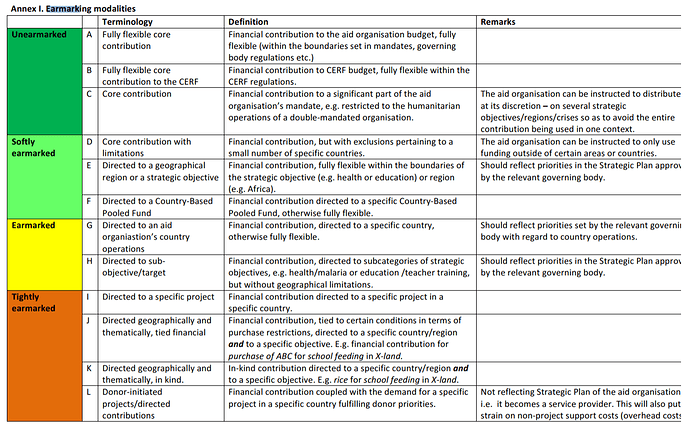This proposal is part of the 2.03 upgrade process, please comment by replying below.
Standard
Activity
Schema Object
iati-activity/default-aid-type/@vocabulary
iati-activity/default-aid-type/@vocabulary-uri
iati-activity/transaction/aid-type/@vocabulary
iati-activity/transaction/aid-type/@vocabulary-uri
Type of Change
Schema addition
Codelist addition
Issue
Defining types of aid (project-type interventions, budget support, debt relief, technical cooperation, etc) is a critical piece of data for users to understand and analyse IATI data. The global standard for this classification is the OECD DAC CRS Type of Aid codelist. This is currently the only list available in the IATI standard. There are, however, use cases in which additional information may be required to define the aid modality. The standard can accommodate this by allowing additional vocabularies from recognised sources to be used in addition to the DAC list.
Proposal
- Allow for multiple occurrences of iati-activity/default-aid-type and iati-activity/transaction/aid-type elements
- Occurs 1..*
- Add attributes iati-activity/default-aid-type/@vocabulary and iati-activity/transaction/aid-type/@vocabulary
- Definition An code for the vocabulary aid-type classifications. If omitted the AidType codelist is assumed. The code must be a valid value in the AidTypeVocabulary codelist.
- Occurs 0..1
- Add attributes iati-activity/default-aid-type/@vocabulary-uri and iati-activity/transaction/aid-type/@vocabulary-uri
- Definition The URI where this vocabulary is defined
- Occurs 0..1
- Guidelines
- Each selected vocabulary should only be used once for each activity (iati-activity/default-aid-type) or transaction (iati-activity/transaction/aid-type)
- All activities and/or transactions should contain a code from the DAC Type of Aid Vocabulary
- The above guidelines should be converted to rules at the next integer upgrade.
- Add AidTypeVocabulary codelist
- A non-embedded codelist should be created
Standards Day
It was recommended that the IATI Technical Team and IATI WP-STAT members engage with the OECD DAC with regard to future modifications to the DAC Type of Aid codelist. There was also consensus that the vocabulary approach could provide more flexibility/granularity.
Links

